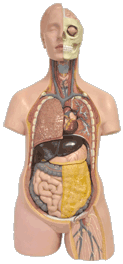At WiseGEEK, we're committed to delivering accurate, trustworthy information. Our expert-authored content is rigorously fact-checked and sourced from credible authorities. Discover how we uphold the highest standards in providing you with reliable knowledge.
What Is Ligand Binding?
Ligands are smaller signal triggering molecules that can join with a larger molecule, called a substrate, to exert some type of biological effect. The process by which these two types of molecules come together is called ligand binding, which is a vital process by which hormones, neurotransmitters, and drugs affect cells. A ligand can be made by an organism, or man-made, but a substrate is always a biomolecule, or a molecule produced by an organism. Usually, the substrate is a target protein, containing specific sites to bind certain ligands.
Intermolecular forces, or weaker bonds formed between molecules, provide the means for ligand binding to occur. Hydrogen bonds, ionic bonds, and Van der Waal forces are all used to facilitate the ligand-substrate bond. The relative weakness of these bonds allows them to be reversible, and for the ligand and substrate to dissociate from one another, unchanged, after bonding. On rare occasions, covalent bonding does occur, where the ligand and substrate do not dissociate afterward.

Affinity is a term used to describe the bond strength between the ligand and substrate. High affinity ligands are useful for inducing changes in substrates, since their binding strength allows them to remain at the site longer. Certain target proteins, like cell receptors with coupled ion channels activated by binding, would therefore be more effectively bound by a ligand with high affinity.
Ligand binding can have several effects on the target protein, and they are classified depending on the structural changes that take place after binding. The term agonist refers to a ligand that binds to a receptor site on the protein and causes a physical response. Partial agonists bind to the receptor site, but are only capable of causing a partial or incomplete response. Antagonists bind to receptors as well, but do not cause a response at all. These terms refer to ligand binding efficacy, or the ability of a molecule to cause a response when bound.
Due to limited receptor sites in an area, ligand binding becomes competitive when more than one of these compounds is present. The compound with higher affinity will usually bind to substrates in higher concentrations than one with lower affinity. Ligands are constantly binding and dissociating from receptors, however, meaning that there will be a smaller concentration of lower affinity ligands bound to receptors at any given time. Both the affinity and efficacy of ligands determine how substrates will respond in their presence.
AS FEATURED ON:
AS FEATURED ON:










Discussion Comments
@hamje32 - I am concerned about people who take a cocktail of drugs. If the article is any indication, the more medicine there is in your bloodstream, the greater the competition among them for separate binding.
My guess is that this would reduce the overall efficacy of the medication, although I can’t say that for sure since I am not a doctor. There are other more certain effects from being on a basket of drugs, like multiplying the possibilities of adverse side effects.
I had a checkup with my doctor once about some medication I was taking. He had asked me to do a blood level. When the results came back, he said that the medication dosages in the blood were low, even though I was taking the recommended daily dosages as prescribed.
As he investigated further he mentioned the possibility that protein binding was causing the dilution, as it were, of the medicine in my bloodstream. I didn’t fully understand him at the time, but after reading this article I think that it makes more sense. As a result of our discussion he increased the dosage a little.
Post your comments